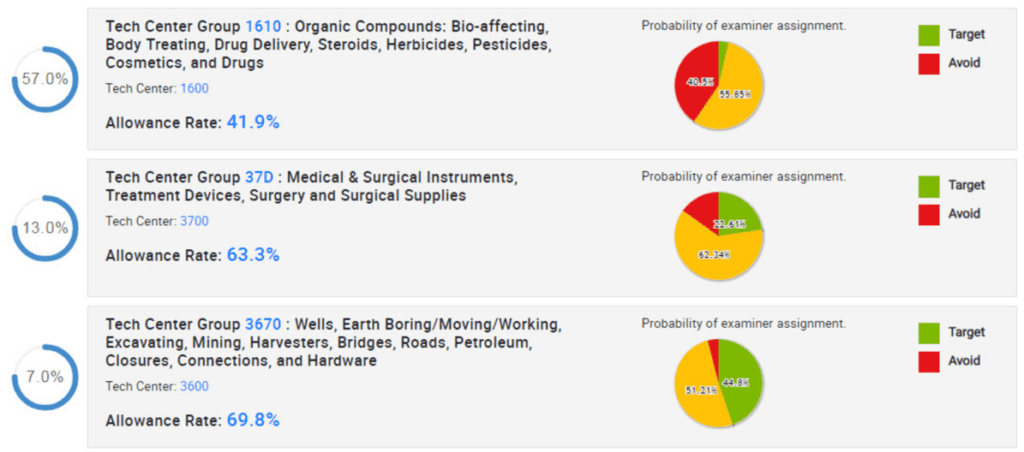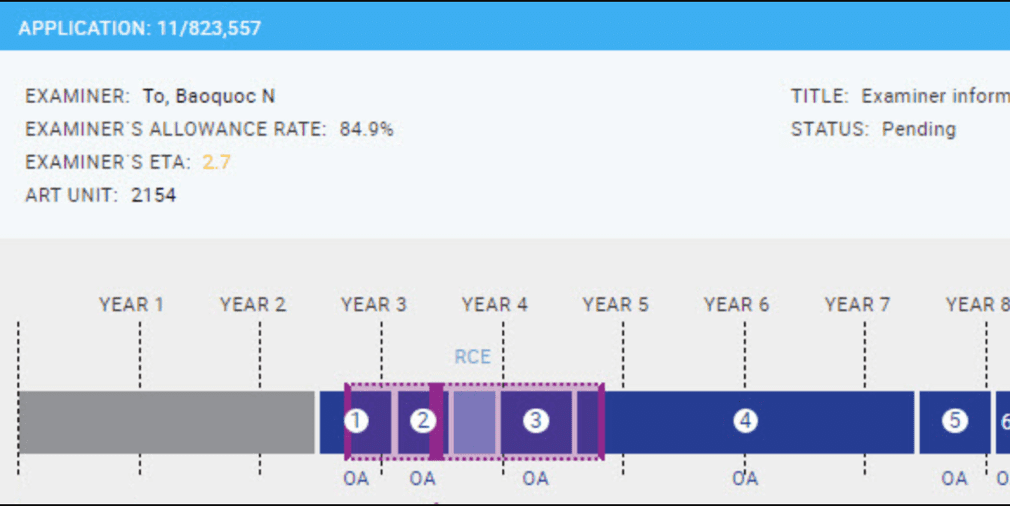How Patent Analytics Can Improve Patent Prosecution Outcomes

Patent prosecution tactics are the decisions made by patent professionals to maneuver their patent applications through the patent process as efficiently as possible. Due to the nature of the patent process, implementing the right tactics at the right time is both an art and a science. The uniqueness of each patent application and the invention it describes, as well as the patent examiner assigned to each case, ensures that patent prosecution will always be unpredictable to some extent. However, the abundance of available USPTO patent data and modern patent analytics tools allow patent professionals to be more scientific in the decisions they make. Patent analytics platforms like LexisNexis PatentAdvisor® open the door to data-backed tactics that can help improve patent prosecution outcomes.
Improve patent prosecution outcomes with strategic patent application placement
Many patent professionals take a reactive approach to the patent process. They submit their patent applications, await their patent examiner’s response, and then respond accordingly. Those patent professionals are most likely unaware that they can be proactive in drafting their patent applications so they have a high likelihood of being evaluated by an applicant-friendly examiner. Patent analytics platforms like PatentAdvisor™ have changed the game by giving patent practitioners the ability to influence patent prosecution outcomes even before filing. The Tech Center Navigator (formerly PathWays™) tool can analyze excerpts from patent drafts to determine which art units are most likely to be assigned. PatentAdvisor also uses USPTO patent statistics to show users which of those potential art units are the most applicant-friendly. Armed with that information, patent practitioners can adjust their patent drafts accordingly to improve the odds that their applications will land in the hands of a statistically favorable patent examiner and improve patent prosecution outcomes overall.

Setting client expectations
Managing client expectations of the patent process may not seem like a “tactic” in the traditional sense, but it does have a significant impact on the actions that are available to patent professionals along the way. By maintaining transparency and keeping clients informed of the obstacles and costs that may arise along the way, clients are more likely to be understanding and supportive of their patent practitioner’s judgment and proposed course of action. PatentAdvisor provides users with many statistics specific to their assigned patent examiner that help them better understand how prosecution is likely to play out. With PatentAdvisor, users can access their patent examiner’s average patent pendency times, the number of office actions they typically issue before granting a patent and their difficulty level relative to other USPTO patent examiners, so users can set client expectations before obstacles arise.

Data-driven decision–making
In the thick of patent prosecution, it is easy to forget that filing a response to an office action is not the only way of responding to an office action. Before diving into what arguments should be made to traverse a rejection, it is worthwhile to take a step back and evaluate all the options on the table. PatentAdvisor helps expose otherwise overlooked courses of action, such as holding an examiner interview or filing a Request for Continued Examination (RCE), instead of a written response to an office action. PatentAdvisor also reveals the outcomes that arose when previous applicants took each of these possible approaches. This helps patent professionals better assess the risk and reward associated with each option before making a decision.
Patent prosecution is an art form, but patent analytics platforms facilitate a more scientific approach to the patent process. With tools like PatentAdvisor, users can utilize patent data and USPTO patent statistics to make informed decisions and maintain positive relationships with patent clients. PatentAdvisor exposes the possible avenues for success so patent professionals can implement smarter tactics to improve patent prosecution outcomes.
Learn more about PatentAdvisor.
The Tech Center Navigator provides clear direction toward success when drafting patent applications.
See how Patent Prosecution Analytics Are No Longer Just a Nice to Have and watch the on-demand webinar.
